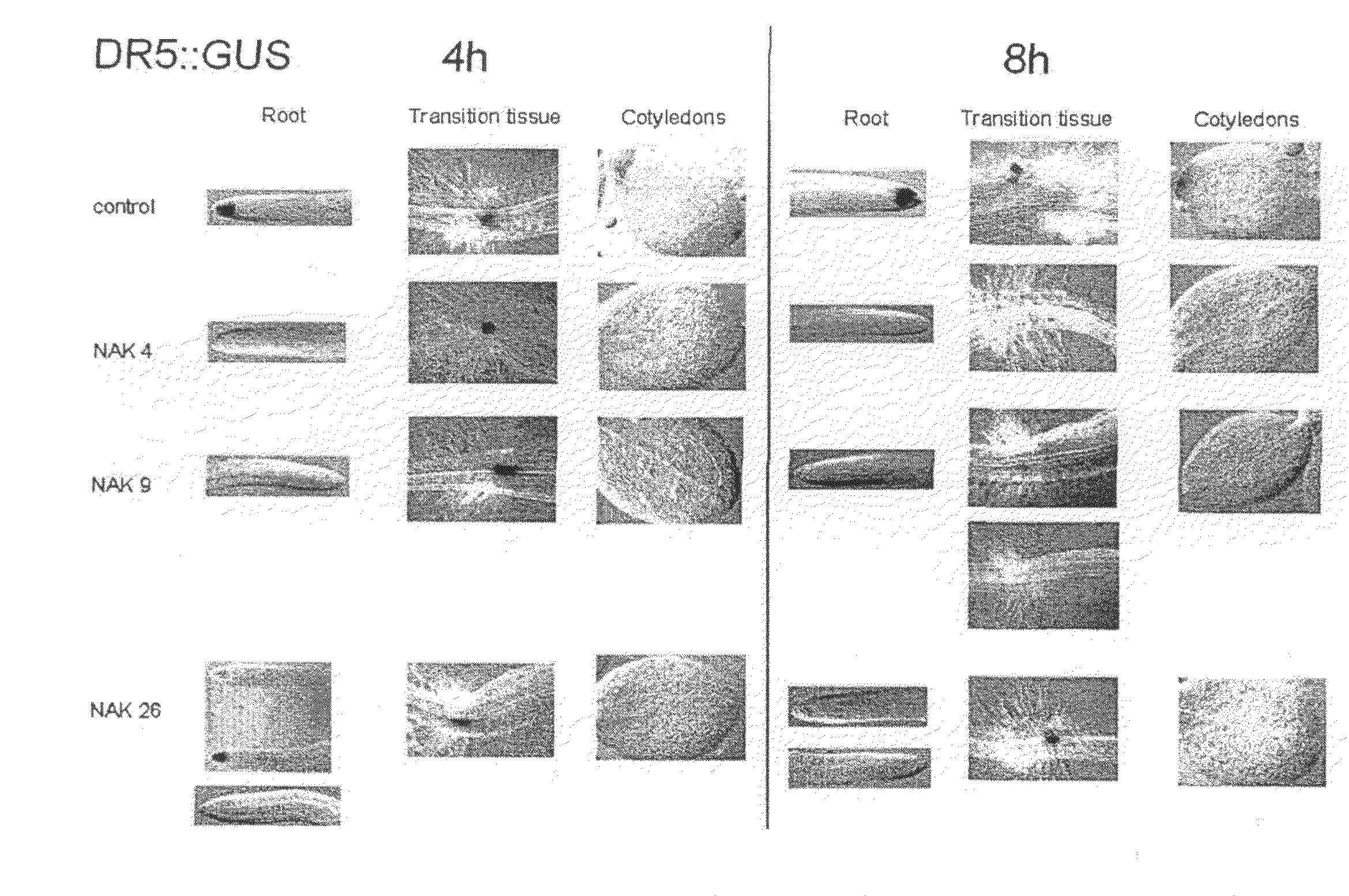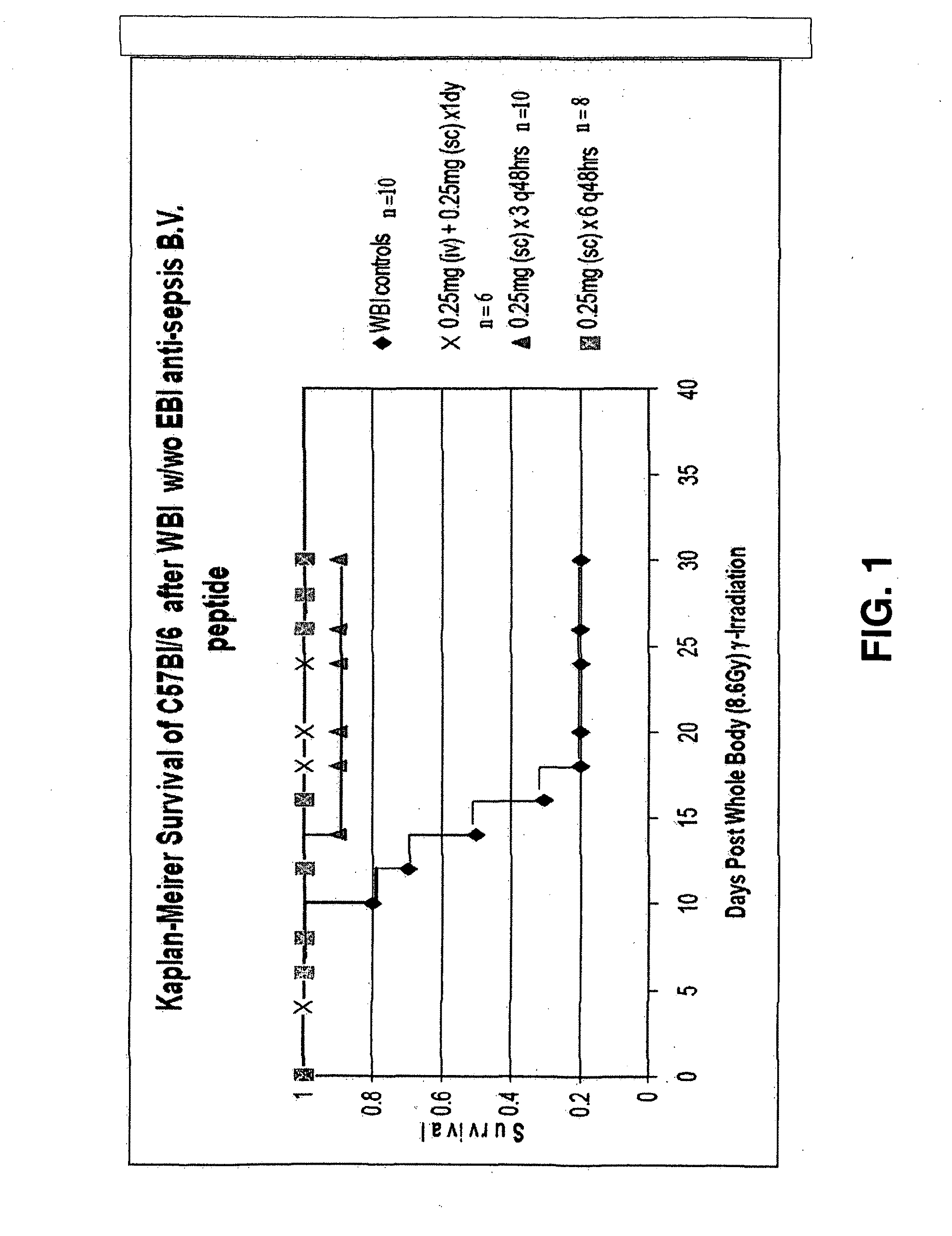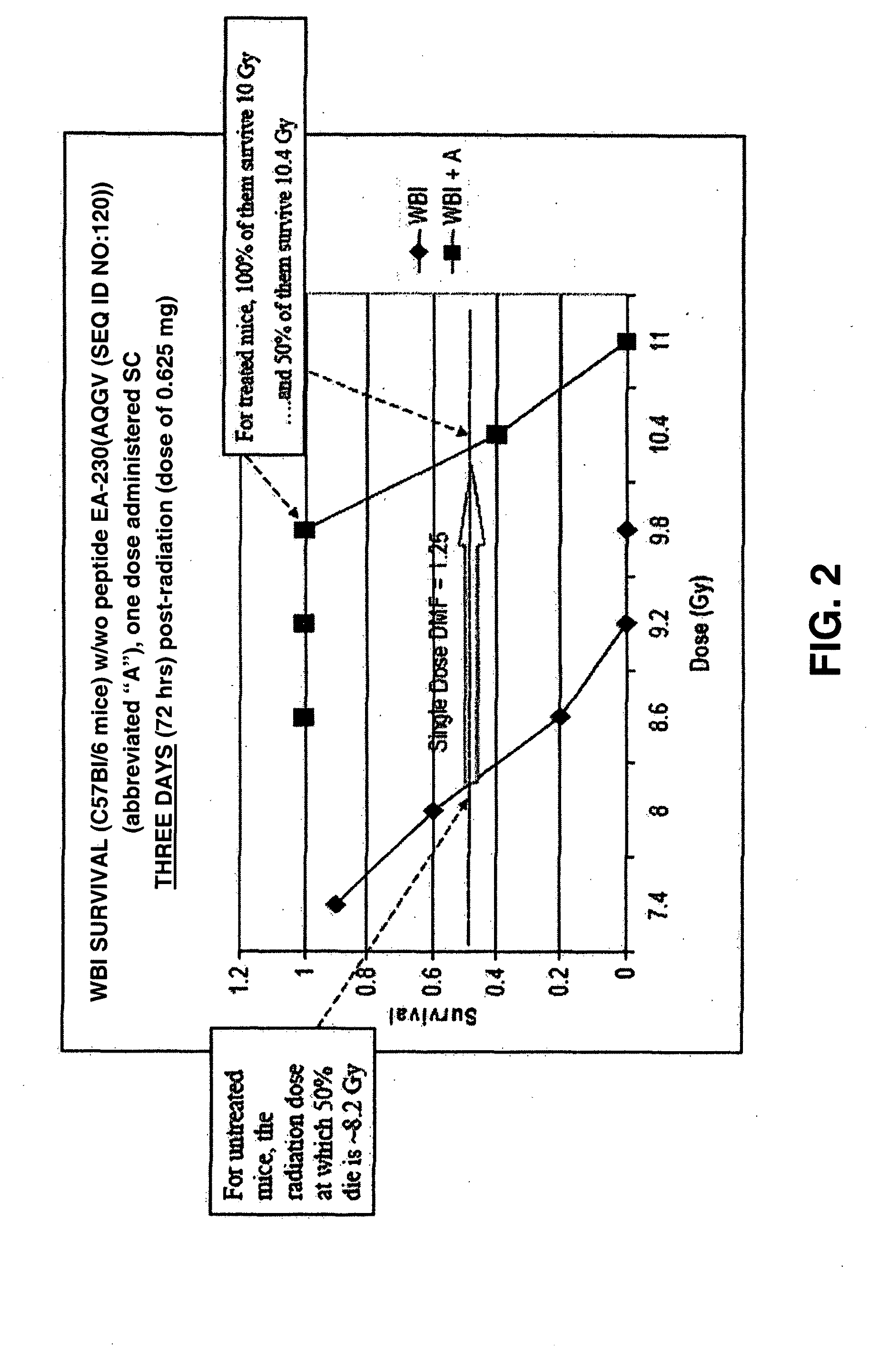Control of radiation injury
a radiation injury and treatment technology, applied in the direction of antinoxious agents, peptide/protein ingredients, extracellular fluid disorders, etc., can solve the problems of no effective drug to ameliorate radiation injury and no effective prophylactic drug to prevent, so as to reduce the lymphocyte count, prevent the absorption of swallowed materials, and improve the effect of radiation exposur
- Summary
- Abstract
- Description
- Claims
- Application Information
AI Technical Summary
Benefits of technology
Problems solved by technology
Method used
Image
Examples
example 1 and example 2
[0113]In the first experiment, 12-week-old female BALB / c mice were treated intraperitoneally with a single injection of either PBS (n=9) or with a peptide (LQGV (SEQ ID NO:117), VLPALP (SEQ ID NO:140), LPGCPRGVNPVVS (SEQ ID NO:114), MTRVLQGVLPALPQVVC (SEQ ID NO:113); n=8, 10 mg / kg). One and a half hours after the treatment, mice were exposed whole body to a single dose of 10 Gy 137Cs-γ-irradiation. In the second experiment, 12-week-old female BALB / c mice were first exposed whole body to a single dose of 10 Gy 137Cs-γ-irradiation and then 1.5 hours after the irradiation treated intraperitoneally with a single injection of either PBS (n=9) or with a peptide (n=8 or 9, 10 mg / kg). During the experiment, mortality and clinical signs (e.g., watery eyes indicating conjunctivitis and weight loss) were observed at different time points. As can be seen from Table 2, all peptides tested had good effect on reducing conjunctivitis in the treated mice, however, no effects were seen on mortality, ...
example 3
[0114]Six oligopeptides (i.e., A: LAGV (SEQ ID NO:121); B: AQGV (SEQ ID NO:120); C: LAG; D: AQG; E: MTR; and F: MTRV (SEQ ID NO:119)) were tested and compared with PBS (control) in a double blind animal study for each peptide's relative ability to aid recovery in a mouse renal ischemia reperfusion test. In this test, the mice were anesthetized, and one kidney from each mouse was removed. The other kidney was tied off for 25 minutes, and the serum urea levels were allowed to increase. Both before and after tying off, each of the separate peptides was administered to thirty (30) different mice (5 mg oligopeptide / kg body mass intravenously), after which, the mortality of the mice was determined for each oligopeptide as well as was the BUN concentration at two hours, 24 hours and 72 hours. The results are shown in Table 3 below (excluding the results of peptide A (LAGV (SEQ ID NO:121)) obtained in Example 3).
[0115]Under inhalation anesthesia, the left kidney with its artery and vein was...
example 4
[0118]One oligopeptide (A) (SEQ ID NO:121) was retested for its capacity to reduce BUN levels in the mice test for the reasons as described above. The results are shown in Table 4 below. As can be seen, mice administered the oligopeptide LAGV (SEQ ID NO:121) now did much better in terms of both survival (a significant reduction in mortality versus the PBS control group) and reduced BUN concentration than the control group (PBS).
PUM
| Property | Measurement | Unit |
|---|---|---|
| molecular weight | aaaaa | aaaaa |
| diameter | aaaaa | aaaaa |
| body temperature | aaaaa | aaaaa |
Abstract
Description
Claims
Application Information
 Login to View More
Login to View More - R&D
- Intellectual Property
- Life Sciences
- Materials
- Tech Scout
- Unparalleled Data Quality
- Higher Quality Content
- 60% Fewer Hallucinations
Browse by: Latest US Patents, China's latest patents, Technical Efficacy Thesaurus, Application Domain, Technology Topic, Popular Technical Reports.
© 2025 PatSnap. All rights reserved.Legal|Privacy policy|Modern Slavery Act Transparency Statement|Sitemap|About US| Contact US: help@patsnap.com



